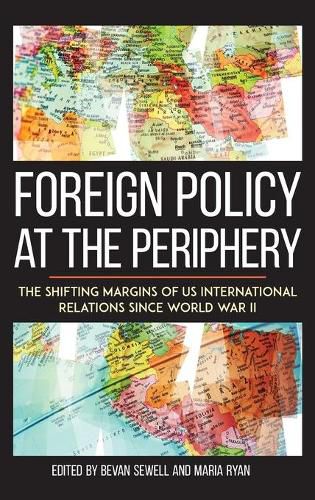Readings Newsletter
Become a Readings Member to make your shopping experience even easier.
Sign in or sign up for free!
You’re not far away from qualifying for FREE standard shipping within Australia
You’ve qualified for FREE standard shipping within Australia
The cart is loading…






This title is printed to order. This book may have been self-published. If so, we cannot guarantee the quality of the content. In the main most books will have gone through the editing process however some may not. We therefore suggest that you be aware of this before ordering this book. If in doubt check either the author or publisher’s details as we are unable to accept any returns unless they are faulty. Please contact us if you have any questions.
As American interests assumed global proportions after 1945, policy makers were faced with the challenge of prioritizing various regions and determining the extent to which the United States was prepared to defend and support them. Superpowers and developing nations soon became inextricably linked and decolonizing states such as Vietnam, India, and Egypt assumed a central role in the ideological struggle between the United States and the Soviet Union. As the twentieth century came to an end, many of the challenges of the Cold War became even more complex as the Soviet Union collapsed and new threats arose. Featuring original essays by leading scholars, Foreign Policy at the Periphery examines relationships among new nations and the United States from the end of the Second World War through the global war on terror. Rather than reassessing familiar flashpoints of US foreign policy, the contributors explore neglected but significant developments such as the efforts of evangelical missionaries in the Congo, the 1958 stabilization agreement with Argentina, Henry Kissinger’s policies toward Latin America during the 1970s, and the financing of terrorism in Libya via petrodollars. Blending new, internationalist approaches to diplomatic history with newly released archival materials, Foreign Policy at the Periphery brings together diverse strands of scholarship to address compelling issues in modern world history.
$9.00 standard shipping within Australia
FREE standard shipping within Australia for orders over $100.00
Express & International shipping calculated at checkout
This title is printed to order. This book may have been self-published. If so, we cannot guarantee the quality of the content. In the main most books will have gone through the editing process however some may not. We therefore suggest that you be aware of this before ordering this book. If in doubt check either the author or publisher’s details as we are unable to accept any returns unless they are faulty. Please contact us if you have any questions.
As American interests assumed global proportions after 1945, policy makers were faced with the challenge of prioritizing various regions and determining the extent to which the United States was prepared to defend and support them. Superpowers and developing nations soon became inextricably linked and decolonizing states such as Vietnam, India, and Egypt assumed a central role in the ideological struggle between the United States and the Soviet Union. As the twentieth century came to an end, many of the challenges of the Cold War became even more complex as the Soviet Union collapsed and new threats arose. Featuring original essays by leading scholars, Foreign Policy at the Periphery examines relationships among new nations and the United States from the end of the Second World War through the global war on terror. Rather than reassessing familiar flashpoints of US foreign policy, the contributors explore neglected but significant developments such as the efforts of evangelical missionaries in the Congo, the 1958 stabilization agreement with Argentina, Henry Kissinger’s policies toward Latin America during the 1970s, and the financing of terrorism in Libya via petrodollars. Blending new, internationalist approaches to diplomatic history with newly released archival materials, Foreign Policy at the Periphery brings together diverse strands of scholarship to address compelling issues in modern world history.